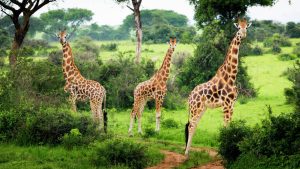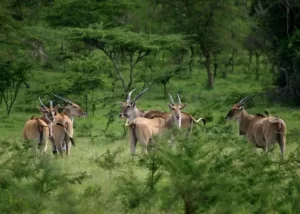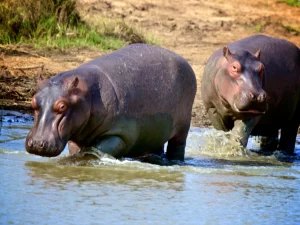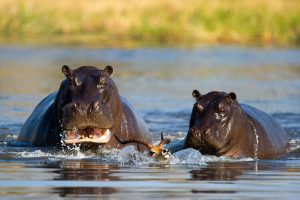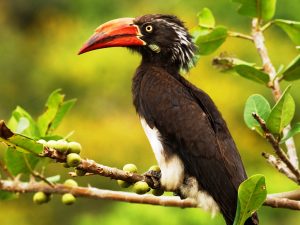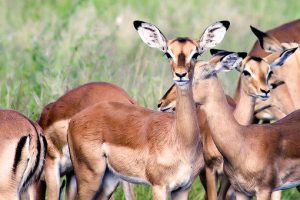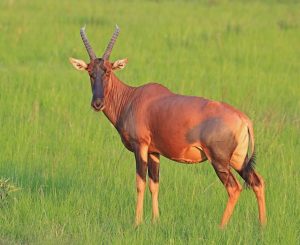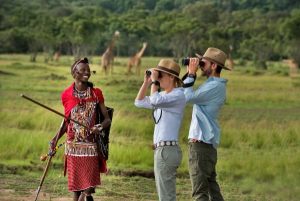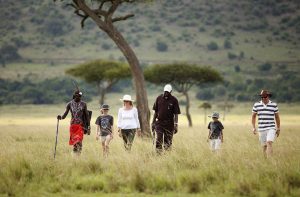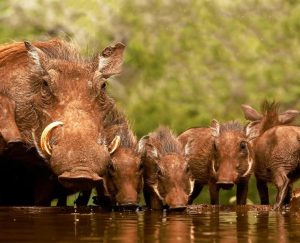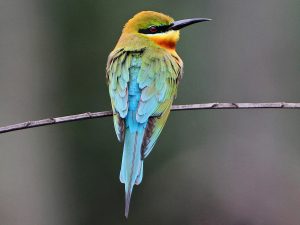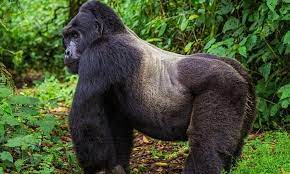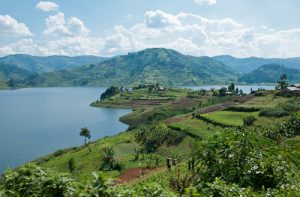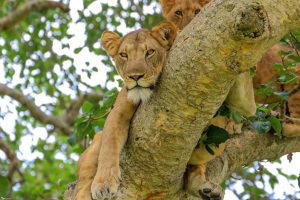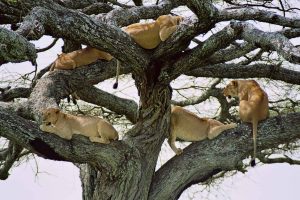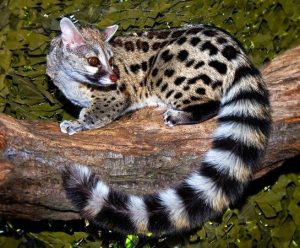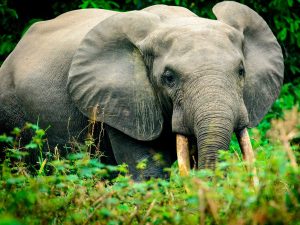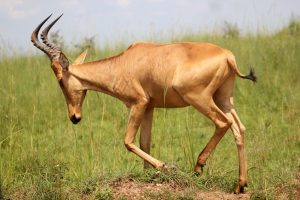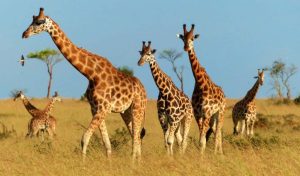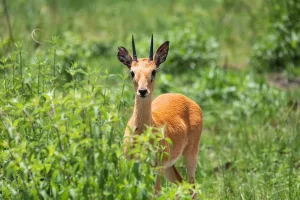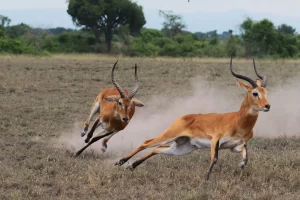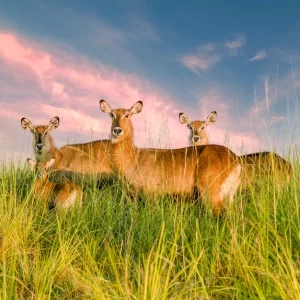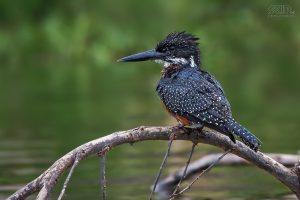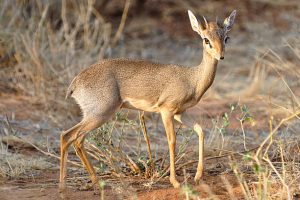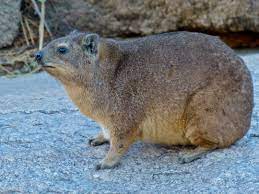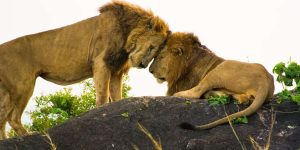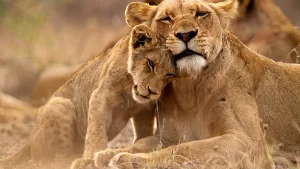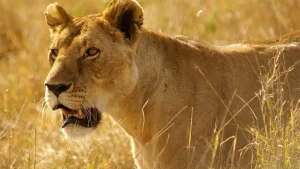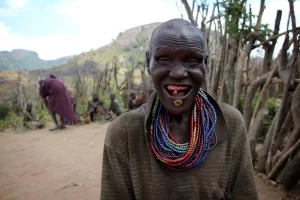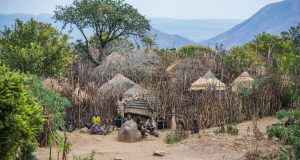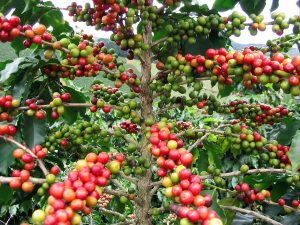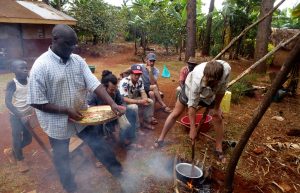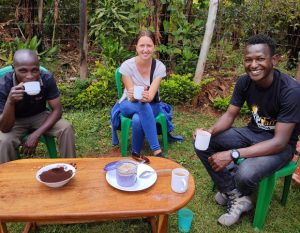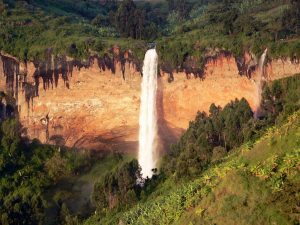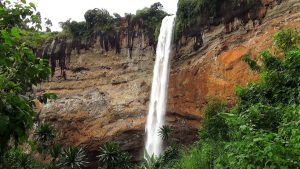
Uganda
Uganda is a landlocked country in East Africa whose diverse landscape encompasses the snow-capped Rwenzori Mountains and immense Lake Victoria. Its abundant wildlife includes chimpanzees as well as rare birds. Remote Bwindi Impenetrable National Park is a renowned mountain gorilla sanctuary. Murchison Falls National Park in the northwest is known for its 43m-tall waterfall and wildlife such as hippos. Below is a list of interesting places to visit during your next summer. for your honey moon, wedding anniversary, safari vacation

List of Interesting places
(1)Ngamba Island
Ngamba Island Chimpanzee Sanctuary is home to 52 orphaned and rescued chimpanzees. Chimpanzee Sanctuary and Wildlife Conservation Trust (Chimpanzee Trust), an NGO, is responsible for all aspects of the sanctuary. Deeply committed to and involved in both field conservation and community education, we work closely with the Ugandan government and wildlife authorities. We offer both day Trips (Half and Full day) and overnight at Ngamba Ecolodge to the sanctuary which provides an exceptional opportunity to closely observe these fascinating great apes in our unique setting.
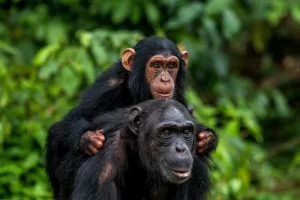
(2) Lake Mburo National Park
Lake Mburo National Park located conveniently close to the highway that connects Kampala to the parks of western Uganda. It is the smallest of Uganda’s savannah national parks and underlain by ancient Precambrian metamorphic rocks which date back more than 500 million years.
Animals of lake Mburo National park
Zebra:
Zebras are African equines with distinctive black-and-white striped coats. There are three living species: the Grévy’s zebra, plains zebra, and the mountain zebra. Zebras share the genus Equus with horses and asses, the three groups being the only living members of the family Equidae. zebras are distinctive single-hoofed mammals that live in herds. There are several species of zebra found in the wild and each zebra’s stripes is completely unique. zebras are black with white stripes. At first glance, it may appear the opposite is true—after all, the black stripes of many zebras end on the belly and towards the inside of the legs, revealing the rest as white.
Hippopotamus
The hippopotamus, also called the hippo, common hippopotamus, or river hippopotamus, is a large semiaquatic mammal native to sub-Saharan Africa. It is one of only two extant species in the family Hippopotamidae, the other being the pygmy hippopotamus. Its name comes from the ancient Greek for “river horse. According to the International Union for Conservation of Nature (opens in new tab) (IUCN), the common hippo isn’t endangered, but it is vulnerable to extinction. The IUCN estimates that between 115,000 and 130,000 common hippos remain in the wild.
Animals and Birds:
It’s a home to 350 bird species like mosque swallow, black bellied bustard, bare-faced-go away bird and Ruppell’s starling, southern ground hornbill and black ,Cassin’s spine tail, blue-headed bee-eater, Nahan’s francolin and Masked Apalis and African pitta.
As well as Mammals like zebras, impalas, elands, buffalos, oribi, Defassa waterbuck, leopard, hippopotamus, hyena, topi and reedbuck.
Topi
Topi, (Damaliscus lunatus), also called tsessebe or sassaby, one of Africa’s most common and most widespread antelopes. It is a member of the tribe Alcelaphini (family Bovidae), which also includes the blesbok, hartebeest, and wildebeest. Topi are medium-sized antelopes with a striking reddish-brown to purplish-red coat. Distinct black patches appear on their face, their upper forelegs, and on their hips and thighs. To complete their singular appearance, the topi’s yellowish-tan legs look like they are encased in stockings, highly social and fast type of antelope found in the savannas, semi-deserts, and floodplains of sub-Saharan Africa.
wild Nature walks
Lake Mburo is an ideal place to do nature guided walks due to the absence of lions and elephants the whole area is free for walking safaris all you need is a game ranger guide to take you through the splendid Africa wilderness.
The salt lick is also one of the best places to take a nature walk and see therein many wildlife the walks always take about two hours and the best time to do a nature walk is in the morning hours as you can encounter hippos returning to water after grazing on land at night and hyenas returning to their dens.
Nine of the fourteen magnificent lakes of lake Mburo can be seen when hiking on top of a hill the views are so striking and unforgettable indeed. Rubanga forest is also an ideal place to take a nature guided walk and birders paradise forest birds and mammals can be seen at the woodlands animals often seen on nature walks are zebras, topi, impalas, warthogs, buffalos and many more.
Together with 13 other lakes in the area, Lake Mburo forms part of a 50km-long wetland system linked by a swamp. Five of these lakes lie within the park’s borders. Once covered by open savanna, this supports the healthy population of Buffalos, Topis., impalas, tower of giraffes, Zebras, Hyena, jackal, bush bucks, leopards, Elands Warthog ,bush pig and hippopotamus. Lake Mburo National Park now contains much woodland as there are no elephants to tame the vegetation. In the western part of the park, the savanna is interspersed with rocky ridges and forested gorges while patches of papyrus swamp and narrow bands of lush riparian woodland line many lakes
(3) Bwindi impenetrable National Park
Bwindi Impenetrable Forest is a large primeval forest located in south-western Uganda in the Kanungu District. The Bwindi forest is on the edge of the Albertine Rift, the western branch of the East African Rift, at elevations ranging from 1,160 to2,707 meter with exceptional to2,607metreswith exceptional biodiversity, with more than 160 species of trees and over 100 species of ferns. Bwindi Impenetrable forest national park became popular to the world because of Gorilla trekking! It is a habitat for more than half of the world’s remaining Mountain Gorilla population. Bwindi also hosts animals like Elephants, duikers, buffaloes, golden cats, bush pigs, giant forest hogs, black-fronted Duiker, yellow-backed duiker, clawless otter, side-striped jackal, civet, numerous bats and rodents. Floristically, the park is among the most diverse forests in East Africa, with more than 1,000 flowering plant species, including 163 species of trees.
Lake Bunyonyi is in south-western Uganda between Kisoro and Kabale, and it is close to the border with Rwanda. A Place of many little birds. The Lake is surrounded by green, lush terraced farm hills with over 200 bird species including . The place combines the art of water birds and some migratory birds. This makes it a perfect ideal for many bird enthusiasts. A dive into the Nyombi swamp reveals a variety of assorted birds like grey crowned cranes, levillant cuckoo, white tailed monad, slender-billed bagla fetch, weavers,
grey crowned crane, egrets, cardinal woodpecker, grey crowned cranes, African king fisher, herons.
(5) Ishasha Queen Elizabeth National Park
Located near the fur most south-western rim of Queen Elizabeth National Park famous in tourism for possessing the highest number of tree climbing lions that often climb African sycamore fig trees and umbrella acacia thorn trees, which have horizontal branches not too far above the ground. “It makes it really easy for lions to climb and get up the tree branches to have a glimpse of their prey, the antelopes, Ugandan Kobs, buffalo, elephant, hippo when feeding in the pastures.
Kibale National Park
A national park located in western Uganda, protecting moist evergreen rainforest. It is 766 square kilometres (296 sq mi) in size. A home to 13 primates of Kibale National Park all of which you can meet while taking a chimpanzee walk at Kibale. It has over 1000 chimpanzees with about 80 that are habituated. Other primates
Animals of Kibale National Park
Primate Chimpanzees
The chimpanzee, also known simply as chimp, is a species of great ape native to the forest and savannah of tropical Africa. It has four confirmed subspecies and a fifth proposed subspecies. The chimpanzee and the closely related bonobo are classified in the genus Pan.
Primate monkeys
These include Black and white colobus monkey, Red tailed monkey, L’Hoest’s monkey and Olive baboon As well as a
Forest Animals.
A few mammals like blue duikers, Elephants, bushbucks, sitatungas, bush pigs, giant forest hogs, common warthogs, and African buffalo.
Fauna and Flora
There are approximately 229 species of trees found within the moist tropical forests Kibale National park. Some endangered timber species of trees include Cordia millenii, Entandrophragma angolense, and Lovoa swynnertonnii. The forest understory is dominated by shade-tolerant shrubs and herbs, which include Palisota schweinfurthii and Pollia condensata, in addition to ferns and broad leaf grasses
(7) Murchison falls National Park
Murchison Falls National Park lies at the northern end of the Albertine Rift Valley, where the sweeping Bunyoro escarpment tumbles into vast, palm-dotted savanna. First gazetted as a game reserve in 1926, it is Uganda’s largest and oldest conservation area. Murchison Falls National Park is famously known for having the most powerful waterfall in the world, where the longest river in the world squeezes through a 7-meter gap and then drops down 45 meters.
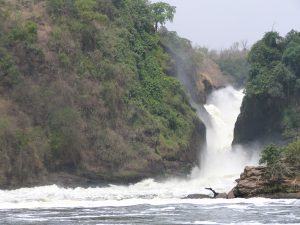
Animals of Murchison Falls National Park
The animals in Murchison falls national park are often seen while on a boat safari and also during game drives in the park. Such common animals often seen are Giraffes, Buffaloes, Uganda kobs, Bushbucks, Elephants, Jackson Hartebeests, Oribis, waterbucks, warthogs, hyenas mention but a few
Elephants:
Elephants are the largest existing land animals. Three living species are currently recognized: the African bush elephant, the African forest elephant, and the Asian elephant. They are the only surviving members of the family Elephantidae and the order Proboscidea, extinct relatives include mammoths and mastodons.
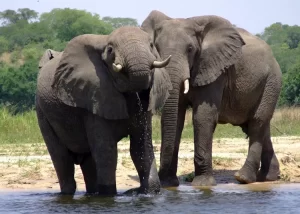
Jackson Hartebeest
The hartebeest, also known as kongoni or kaama, is an African antelope. It is the only member of the genus Alcelaphus. Eight subspecies have been described, including two sometimes considered to be independent species found in Murchison falls National Park in Uganda on the African continent.
Rothschild giraffe
Description: The Rothschild’s giraffe, also known as the Baringo or Ugandan giraffe is a subspecies of the Northern giraffe. It was named after the London zoologist Lionel Water Rothschild who first described the subspecies in the early 1900s Rothschild’s giraffe is a subspecies of the Northern giraffe. It is one of the most endangered distinct populations of giraffe, with 1,669 individuals estimated in the wild in 2016.
Oribi antelope
oribi, (Ourebia ourebi), small, swift African antelope, the most gazelle-like of the dwarf antelopes (tribe Neotragini, family Bovidae). It inhabits Africa’s northern and southern savannas, living in pairs or small herds found in eastern, southern and western Africa.
Uganda Kob antelope
The Ugandan Kob is a subspecies of the Kob, a type of antelope. It is found in sub-Saharan Africa in South Sudan, Uganda and the Democratic Republic of the Congo. The Ugandan Kob is normally reddish-brown, differentiating it from other Kob subspecies.
Defassa Waterbuck
The waterbuck is a large antelope found widely in sub-Saharan Africa. It is placed in the genus Kobus of the family Bovidae. It was first described by Irish naturalist William Ogilby in 1833. Its 13 subspecies are grouped under two varieties: the common defassa waterbuck.
Lion:
The lion is a large cat of the genus Panthera native to Africa and India. It has a muscular, broad-chested body, short, rounded head, round ears, and a hairy tuft at the end of its tail. It is sexually dimorphic; adult male lions are larger than females and have a prominent mane. Lion prey includes antelopes, zebras, wildebeest, buffalo, and other grassland animals. These animals are often larger and faster than an individual lion. Lions are fierce predators that often stalk their prey before attacking.

Birds of Murchison Falls National Park.
Murchison falls is among Uganda’s best birding spots with over 451 bird species which include; Albertine rift endemic birds, water birds, and savannah birds. Viewing birds in the scenic landscape and amazing wildlife of Murchison is among the most interesting experiences while on a Ugandan safari. There are very many birds in the park of which some are rare, common, and occasional such as the Gray crowned crane(Uganda’s National bird), Giant Kingfisher, Giant Heron, Shoebill stork, Abyssinian Ground Hornbills, Nightjars, Marabou stork, Black headed lapwing, Back-bellied Bustard among others.

Kidepo Valley National Park
Kidepo Valley National Park is a 1,442 square kilometres national park in the Karamoja region in northeast Uganda. Kidepo is rugged savannah, dominated by the 2,750 metres Mount Morungole and transected by the Kidepo and Narus rivers. Kidepo valley national park is an Important Birding Safaris Area in Uganda with close to 450 bird species and a dream Uganda tour destination for bird watching expeditions. A dozen out of the 50 birds of prey species in Uganda are endemic in the Karamoja region. Kidepo usually offers excellent lion and elephant sightings. Herds of up 1,000 buffalo are often encountered. Cheetah are seen with increasing frequency, and it is home to many dry-country species, among them caracal, aardwolf, greater and lesser kudu, mountain reedbuck and Guenther’s dik-dik.
Animals of Kidepo National Park
The common animals include Elephants, Zebra, Bush Pigs, Rothschild Giraffes, Eland, Jackson’s Hartebeest, Buffalo, Oribi, Lion, Leopard, Spotted Hyena, Black-backed and Side-backed Jackal. Kidepo is the best park in Africa for great buffalo herds!!
dik-dik.
A dik-dik is the name for any of four species of small antelope in the genus Madoqua that live in the bushlands of eastern and southern Africa. Dik-diks stand about 30–40 centimeters at the shoulder, are 50–70 cm long, weigh 3–6 kilograms and can live for up to 10 years.
Ostrich
Ostriches are large flightless birds of the genus Struthio in the order Struthioniformes, part of the infra-class Palaeognathae, a diverse group of flightless birds also known as ratites that includes the emus, rheas, and kiwis. There are two living species of ostrich: the common ostrich and the Somali ostrich, native to certain large areas of Africa and is the largest living bird species. It is one of two extant species of ostriches, the only living members of the genus Struthio in the ratite order of birds.
Rock Hyrax
The rock hyrax, also called dassie, Cape hyrax, rock rabbit, and coney, is a medium-sized terrestrial mammal native to Africa and the Middle East. Commonly referred to in South Africa as the dassie, it is one of the five living species of the order Hyracoidea, and the only one in the genus Procavia. Rock hyraxes, also called rock dassies or rock rabbits, are small, stub-tailed, rabbit-like animals native to Africa. Though rock hyraxes resemble rodents, their closest living relatives are actually elephants and manatees. These social mammals primarily eat vegetation.
Rothchild giraffe
Description: The Rothschild’s giraffe, also known as the Baringo or Ugandan giraffe is a subspecies of the Northern giraffe. It was named after the London zoologist Lionel Water Rothschild who first described the subspecies in the early 1900s Rothschild’s giraffe is a subspecies of the Northern giraffe. It is one of the most endangered distinct populations of giraffe, with 1,669 individuals estimated in the wild.
Lions
Kidepo Valley National Park boasts of a steadily growing lion population of approximately 132 individual lions that roam the expanses of the vast remote safari Park. The park in our opinion is the best place to see lions in Uganda.
cultures around Kidepo National park
IK Tribe
The Ik tribe sometimes called Tueso; is an indigenous community residing in Karamoja region, northeast of Uganda are part of the Cultural Safaris to Kidepo National Park. In the local language, “Ik” loosely translates to ahead of migration or the first to migrate here. The Ik people sometimes called Teuso, are an ethnic group numbering about 10,000 people living high in the mountains of Morungole northeastern Uganda near the border with Kenya, next to the more populous Karamojong and Turkana peoples and in the Kidepo Valley Park Region of Northeastern Uganda.
Sipi Falls mount Elgon
sipi activities
Sipi Falls is a series of waterfalls found at the foothills of Mountain Elgon just at the edge of Mount Elgon National Park. The falls are one of the most awe-inspiring sights in Eastern Uganda. Sipi Falls consists of three waterfalls, found in the village of Sipi, in the Kapchorwa district of eastern Uganda.
Sipi Coffee tour
In Bugisu, a southeastern sub-region of Uganda, growers cultivate an unusual variety of Arabica coffee called Nyasaland on the slopes of Mount Elgon. The variety has a long ,Sipi Coffee Tour is a practical and fun experience! Trace the story of coffee, from seed to cup, at a small family farm. Sipi Falls Arabica Coffee is some of the finest in the world. Meet local farmers to tour their plantation and learn about the life cycle of the crop.
Sipi falls hike
The Sipi falls are a phenomenon to many visitors, both local and foreign, yearly. Regarded as one of the most romantic places in Uganda, the falls are a series of three prominent waterfalls, with the longest drops as high 100m. The second waterfall drops 75m below and has upper cascades before the plunge. The third water fall measures 85m and is tall and columnar.
It has a vigorous flow with mist and even creates mini rainbows when the sun hits it! However, there are countless other less prominent falls nearby. They can be a wonderful place to bring a loved one to spend some quality time together. The falls pick their water as it flows from the slopes of Mountain Elgon. Located in Eastern Uganda in Kapchorwa District, North East of Mbale and Sironko,

